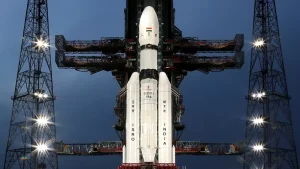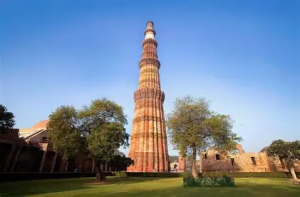What India Needs to Know About the New Pakistan–Saudi Arabia Strategic Defence Pact

What India Needs to Know About the New Pakistan–Saudi Arabia Strategic Defence Pact
On 17 September 2025 Pakistan and Saudi Arabia signed a Strategic Mutual Defence Agreement that says an attack on one will be treated as an attack on both. The pact institutionalises long-standing security ties between Riyadh and Islamabad and has immediate diplomatic and strategic implications for South Asia and the Gulf. Below is a clear, factual explainer for an Indian audience — what happened, why it matters, how India has reacted, and what to watch next.
What exactly was signed — the core facts
Pakistan’s Prime Minister Shehbaz Sharif and Saudi Crown Prince Mohammed bin Salman signed a “Strategic Mutual Defence Agreement” during the Pakistani leader’s state visit to Riyadh on 17 September 2025. The public text and official statements state that “any aggression against either country shall be considered an aggression against both.” The ceremony included senior military leaders and was widely covered by international outlets.
Why this is a load-bearing fact: the core pledge — equal treatment of attacks — is the clause most widely reported and the part with the clearest potential security consequences.
The immediate context: why now?
Reports and commentary from several international outlets place the pact in the context of wider Middle East instability in 2025 (including recent strikes in the region) and a strategic reassessment in Gulf capitals about security guarantees. Analysts note Riyadh has been diversifying security partnerships amid concerns about the reliability of external protectors, and formalising ties with Pakistan follows years of close cooperation. The pact also comes at a time when Gulf states are balancing relations with multiple powers while managing regional tensions.
Key verified points India should note
- The date and the signatories: Signed 17 September 2025 by Shehbaz Sharif (Pakistan) and Mohammed bin Salman (Saudi Arabia), publicly announced by both sides.
- The central pledge: The agreement’s headline clause treats aggression against one party as aggression against both — a Nato-style mutual defence wording.
- Pakistan remains the only Muslim-majority nuclear-armed state: Press coverage has emphasised Pakistan’s nuclear status as a factor that gives the pact particular strategic sensitivity. Reporting has avoided presenting any official transfer of nuclear assets; coverage notes ambiguity about any explicit nuclear guarantees.
- Saudi public posture: Riyadh has publicly framed the pact as strengthening deterrence and not aimed at any specific country; Saudi statements also underline continued intent to maintain relations with India.
- India’s official reaction: The Ministry of External Affairs said New Delhi is “aware” of the development and will “study the implications of this development for our national security as well as for regional and global stability.” MEA spokesperson Randhir Jaiswal made the comment as India reviewed the pact.
What the pact does not (yet) say — important limits
- There is no public text showing any transfer of weapons, nuclear sharing, or automatic military deployment mechanisms. Reporting stresses institutionalisation of cooperation rather than immediate operational integration.
- Saudi officials have denied the pact is targeted at a third country, and nothing in public statements names India or any other state. That restraint is notable in Riyadh’s messaging.
Potential implications for India — sober, practical takeaways
- Diplomatic balancing: India has invested heavily in ties with Saudi Arabia over the last decade (energy, trade, labour). New Delhi will likely emphasise continuity of that relationship while pressing for clarity on defence arrangements that could affect regional stability. India’s “we will study” response reflects this balance.
- Security calculations in South Asia: The pact formalises a senior regional relationship involving a nuclear-armed state. While not an immediate change to frontline military posture, it introduces an additional diplomatic variable into India’s strategic planning and crisis management calculus. Analysts will watch for follow-on agreements (exercises, basing, intelligence sharing).
- Energy and economic ties remain a buffer: Saudi assurances about India, combined with longstanding commercial links, make a wholesale rupture unlikely — instead, expect careful diplomatic engagement to manage differences.
- No immediate military threat implied: There is no verified public evidence that the pact changes force deployments or creates a new front against India. The agreement’s immediate effect is political and deterrent, not operational.
What India (and observers) should watch next
- Official texts or implementing protocols. If either side publishes detailed implementing agreements (bases, joint exercises, command arrangements), those will materially change the picture.
- Defence cooperation steps. Noticeable increases in joint exercises, arms transfers, basing, or intelligence-sharing would be concrete indicators of operational deepening.
- Diplomatic engagement between New Delhi and Riyadh. Look for high-level talks or clarifications from Saudi officials about the pact’s scope vis-à-vis India.
Bottom line for Indian readers
The Pakistan–Saudi pact of 17 September 2025 formalises a long-standing security relationship and contains language that treats an attack on one as an attack on both. That headline clause is strategically significant and merits careful attention — but as of now, public reporting does not show operational military integration or explicit nuclear sharing. India has signalled it will study the pact’s implications while continuing to protect its national interests and maintain ties with Riyadh. For now, the development is a diplomatic and deterrence shift rather than an immediate change to military realities.
Reporting used for this article includes Reuters, AP, Financial Times, Al Jazeera, India Today and official Indian statements cited in Indian media. Key reports: Reuters (17 Sept 2025), AP (17–18 Sept 2025), Al Jazeera (17 Sept 2025), Financial Times (17 Sept 2025), India Today / Ministry of External Affairs reaction (18 Sept 2025).
Also read;Surya’s Birthday Bash: Captain’s 47 Seals Easy Win Over Arch-Rivals
Last Updated on: Thursday, September 18, 2025 3:26 pm by The Statesman India Team | Published by: The Statesman India Team on Thursday, September 18, 2025 3:26 pm | News Categories: Trending
About Us: The Statesman India covers the latest News on Current News, Business, Sports, Tech, Entertainment, Lifestyle, Automobiles, and more, led by Editor-in-Chief Ankur Srivastava. Stay connected on Facebook, Instagram, LinkedIn, X (formerly Twitter), Google News, and Whatsapp Channel.
Disclaimer: At The Statesman India, we are committed to providing accurate, reliable, and thoroughly verified information, sourced from trusted media outlets. For more details, please visit our About, Disclaimer, Terms & Conditions, and Privacy Policy. If you have any questions, feedback, or concerns, feel free to contact us through email.
Contact Us: newssites1234@gmail.com







